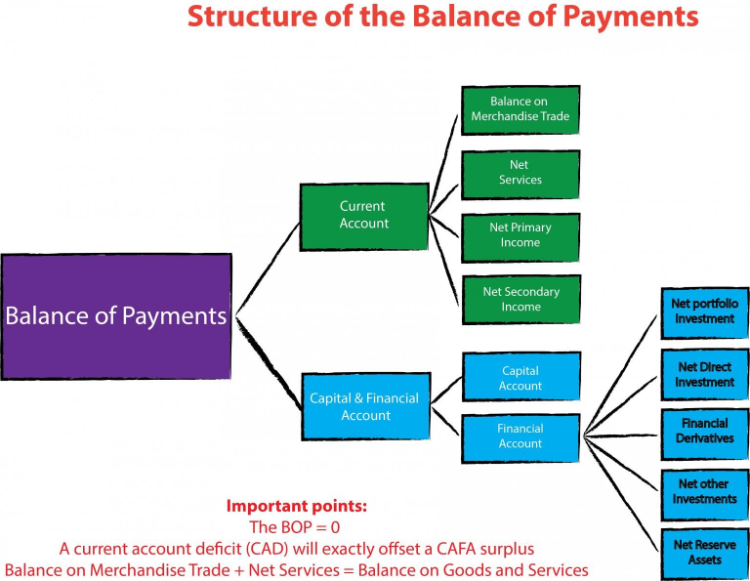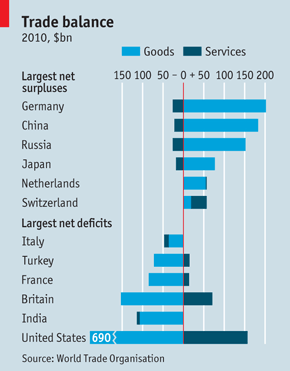Balance of payment(BOP)是一国与其他国家的个人和实体(包括政府)在特定时期内的所有国际交易(收支)的记录, 在 A-Level会计体系里分成 3 个主要账户, 分别是current account、 capital account 和 financial account。

Current account 又分成四个部分:balance in goods, balance in service, primary income和secondary income.
1. balance in goods 就是 exports -imports 在 goods 上的 net 净值的钱
2. balance in service exports - imports 在 service 上的 net 净值钱。
3.primary income 记录的是这个国家的净收入,这个 income 是指基于 factor of production 而获得的 rent(land), wage(labor),capital(interest) 等等,比如你的越南手机厂给你年终分红,就记在 China 的 current account 的 income 这个项目为+。
4.secondary income(易错点注意!) 一旦看到transfer payment就要想到“不劳而获”),这个相当于是你没有付出任何 capital 或者 labor 等等的,从国外纯拿钱,比如你在美国的亲戚给家里打钱,或者国家之间的捐款, 纯人道援助之类的,就是 current transfer/secondary income。
Financial account 主要就是记两个项目,financial assets 是实体资产,比如你去泰国花 100 万收购了个厂子,那么泰国的 financial account 记+100 万, China 的 financial account 记-100 万。另外是 stock 和 bond 这样的非实体的资产,比如你买的美国股票,也记在 financial account 里面。
Capital account 主要记 商标, 版权,专利之类的偏 IP 类的交易,因为比较小,基本可以忽略不计,所以在BOP 里面,其实是 financial account 和 current account 在对冲的,也就是两个账户加起来是 0 就是我们所说的 balance 的状态,换句话说 financial account 和 current account 可以各有 surplus 和 deficit,但是 BOP 本身大多数情况下是 0。
Current account 除了考不同的 items 怎么记账之外, 再就是 surplus 和 deficit 的问题了,如下图,美国和英国就是典型的基本是 deficit,China 是基本是 surplus.

current account 正常情况下是在不断变化波动的,实际上不可能 balance 在 0 这个点,国际贸易总是有赢有输;理论上,一个 微小波动的 surplus 或 deficit 都不是问题.
但是特别注意, policy 一定是针对 problem,没有 problem 干嘛要 policy 去 correct),但是一个 persistent huge 的 surplus 或deficit 就有问题了,需要先去 check the problem 然后制定policy。
causes of imbalances in the current account

什么会导致 current account deficit 呢?
1. Higher inflation 你的通胀比你的贸易伙伴高,说白了,就是你价高了,对方不买,所以你的 trade deficit 会上升
2. Uncompetitive exports 你的产口没有竞争力,要么就是价格,要么就是质量,甚至品牌,反正国外消费者不待见你,你的 trade deficit 就上升
3. High consumer spending 其实就是 exports 也许正常,但你的国内居民太能买了,买买买都是 imports,imports 大于exports太多,也是 trade deficit
4. Decline in export sector 出口部门自己表现不行,不给力
5. Overvalued exchange rate,汇率太高了导致 exports 价格高
